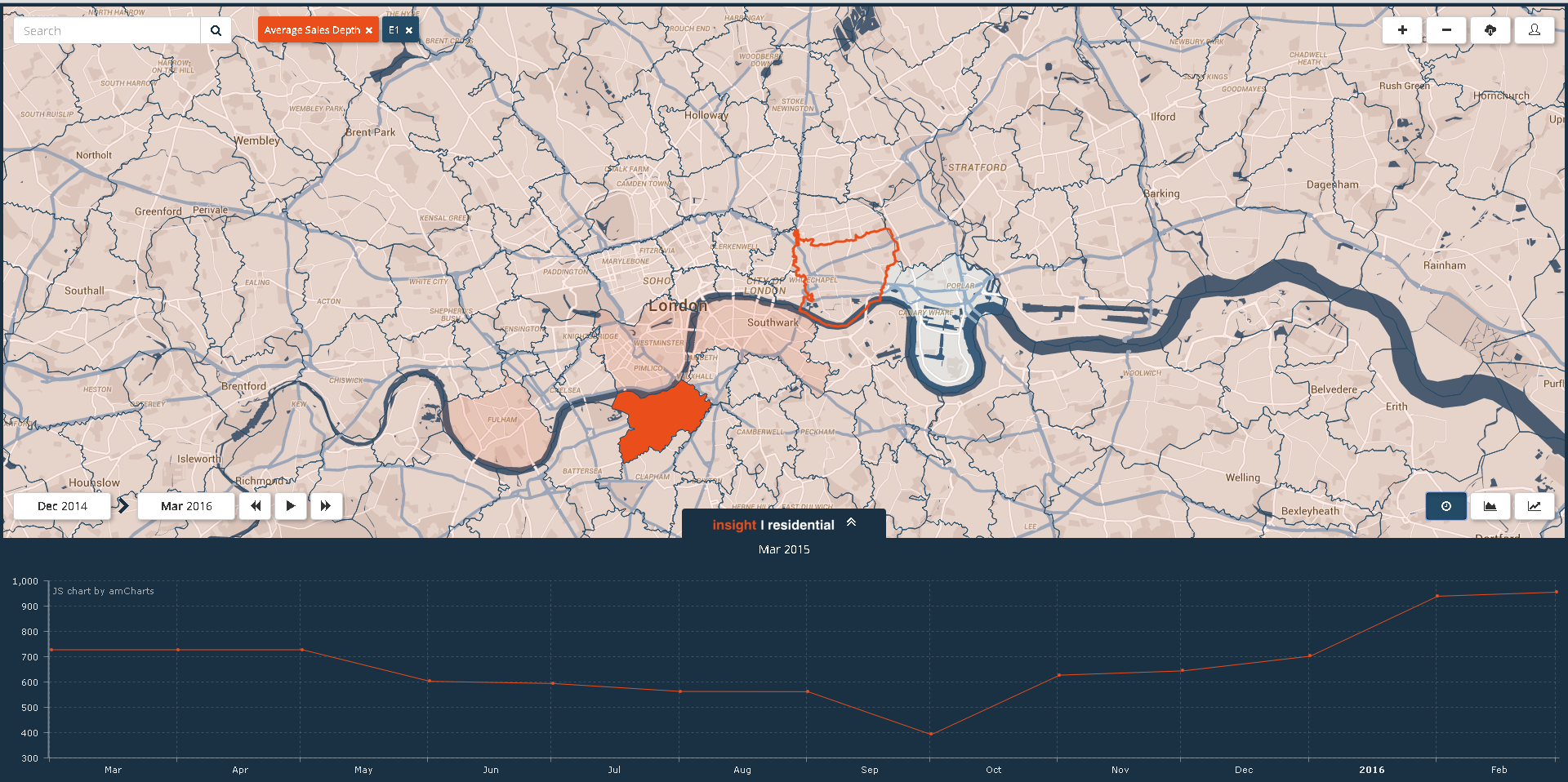As part of the evolving Prop Tech industry, platforms such as Insight Residential are creating wider access to more detailed due diligence metrics by means of some 160 datasets located in one centralised hub. We spoke to CEO Gavriel Merkado (@insight_resi) on how property investors will be able utilise the platform to engage in more effective market research and, to quote the company´s slogan, “see the market, before the market”:
Can you give readers who are not aware an outline of what Insight Residential is?
A common problem for property investors and developers is understanding the market and the potential of their property. Most people spend hours trying to build an accurate picture of what is going on in the market, and try to estimate the value of their property or project. Often times mistakes are made, data is slow to gather and can be inaccurate, the market can be mistimed and property mispriced.
Insight Residential is a big data analysis system. We bring together all the different data sets about residential property into a single central source, so you no longer need to spend time looking for information about what is happening in the market. We save our clients 90% of the time they would normally spend trying to gain information. Our data is 99.8% accurate
What are the predominant metrics that buy to let investors and property traders can utilise?
For investors looking for yield opportunities Insight Residential provides them an instant view of both current and historic yields for any property type in any area of the UK. You can use the system to spot which areas and property types have the best investment returns, and which may change in the future.
For property traders and quick to act developers it is incredibly easy to use this system to identify property types and areas which are currently undervalued. We’ve found dozens of opportunities for making high double digit returns, just by timing the market. This can be done through the comparative analysis of asking prices, achieved prices, market activity and yields.
How can investors use Insight Residential to gain better understand local market dynamics (overall supply / demand, demographics, population growth, social factors etc.)?
We have over 160 different data sets in the system currently. On the supply side we have measures for the quantity and type of properties available on the market both to rent and to buy, as well as local population data and population density data. We also have a measure of the number of property enquiries in the market which is great to understand if more people are looking at a particular area.
I understand you have been undertaking some research into the impact of Brexit on the property market – would you be able to elaborate on your findings for us?
We put together some research data which you can find here. In short what it found was that house prices had a significant impact on voting behaviour. The higher the house prices in an area, the more likely people were to go out to vote, and the more likely the were going to vote ‘remain’. The turning point was at £282,000. If the average house price in an area was above that amount then the area would likely vote ‘remain’, below that amount, ‘leave’.
More immediately while we have seen some downward movement in asking prices in Q2 this year, as of yet there has not been the much feared Brexit crash, and as i’m sure many of your readers will know, in many metropolitan areas the interest from foreign buyers has increased significantly as a result of the cheaper pound.
Based on your ongoing research, and hypothetically eliminating any Brexit-associated downturn risks, what areas of Greater London have been showing interesting signs in terms of capital appreciation?
There are a few areas of London that we are looking at for different reasons and with different property types in each of them. In one area of East London we’ve noticed an increase in the number of enquiries, which often leads to an increase in asking prices, and subsequently an increase in sold prices. On the other hand there is an area in West London where 1 bedroom flats have been historically under priced and are now catching up to where they should be in the market. In a City as large and diverse as London there are dozens of trends, changes and opportunities ongoing at any time.
Are there any areas that are showing negative trends?
There has been a widening gap across London between the prices asked the the prices paid for property, and we have identified some property types which are most ‘at risk’ of a price fall if the market does move downward, but nothing has emerged as a creating a negative trend just yet.
In similar vein, with many commentators observing what could be an oversupply of stock, would be great to see what Insight Residential has been observing in the new build market?
Any supposed ‘oversupply’ will be at the super luxury end of the market, where developers have been paying outrageous sums for buildings and plots on the basis that they can build and sell them on to wealthy individuals, primarily offshore. Over the past year with troubles in the BRIC and oil dependent economies, many of those buyers have ‘dried up’ and developers are not finding that their ultra luxury properties are selling as well or as quickly as before, but with so many developers having previously piled in to the that segment there may now be a relative ‘oversupply’ of super luxury, which in reality is more like a possible lack of demand.
However the majority of the market still suffers from fundamental shortage of housing. We have seen an increase in the number of properties coming on to the market, up from the low periods of October last year, but only slightly more than what was seen this time last year and so it does not create an immediate concern.

Should a correction become apparent as uncertainty continues in the market, what would be your tips for investors?
We did a bit of research on this and you can see it here. In short we found that Liverpool had the lowest correlation with the rest of the market of any major urban area. Meaning that if the market is going down, then we would expect Liverpool to go down the least. So as a defensive investment it makes a lot of sense.
If people would like to know more about what we find then follow us on Twitter @insight_resi and for those who are more active in the market we invite you to trial our software system by visiting www.insight-residential.com which helps you to identify trends risks and opportunities across the market.









